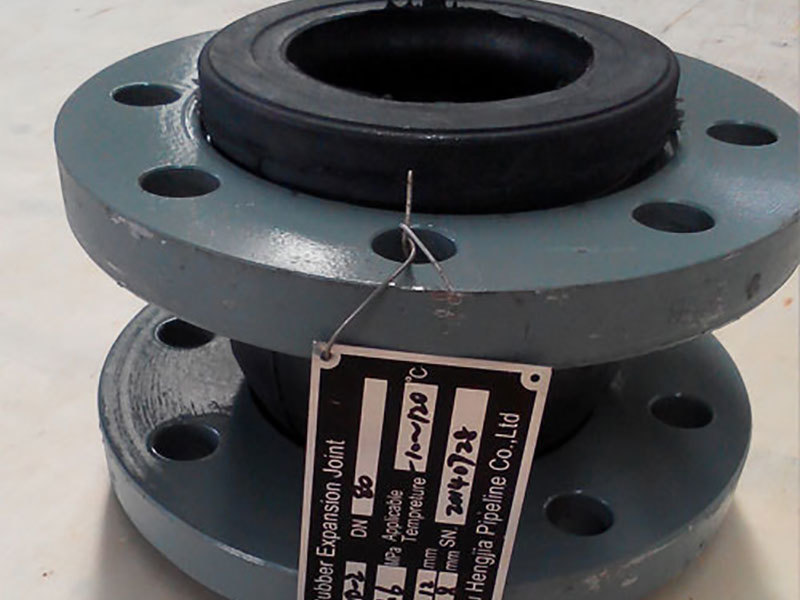Why Choose Straight Seam Steel Pipe for Your Next Project?
Release time:
2025-10-09
Why Choose Straight Seam Steel Pipe for Your Next Project? In the realm of industrial equipment and components, particularly in piping systems, the selection of materials can significantly impact the efficiency, durability, and overall success of a project. Among the various options available, straight seam steel pipes stand out as a preferred choice for many engineers and project managers. This a
Why Choose Straight Seam Steel Pipe for Your Next Project?
In the realm of industrial equipment and components, particularly in piping systems, the selection of materials can significantly impact the efficiency, durability, and overall success of a project. Among the various options available, straight seam steel pipes stand out as a preferred choice for many engineers and project managers. This article delves into the numerous advantages of straight seam steel pipes, exploring their applications, benefits, and factors to consider when choosing them for your next project.
Table of Contents
- Introduction to Straight Seam Steel Pipes
- What Are Straight Seam Steel Pipes?
- Advantages of Straight Seam Steel Pipes
- Applications of Straight Seam Steel Pipes
- Considerations When Choosing Straight Seam Steel Pipes
- Comparison with Other Pipe Types
- Frequently Asked Questions (FAQs)
- Conclusion
Introduction to Straight Seam Steel Pipes
Straight seam steel pipes are a type of pipe formed by welding together flat steel plates along a straight seam. This method of fabrication gives these pipes unique characteristics and benefits that make them an ideal choice for various applications in industrial settings. Understanding the fundamentals of straight seam steel pipes can help project managers and engineers make informed decisions that align with their project requirements.
What Are Straight Seam Steel Pipes?
Straight seam steel pipes are manufactured from rolled steel plates that are welded together along a straight line. The welding process typically involves techniques such as electric resistance welding or submerged arc welding, ensuring that the seams are strong and reliable. These pipes are available in various diameters, wall thicknesses, and lengths, making them versatile for numerous applications.
The production of straight seam steel pipes allows for precision in dimensions and enhanced control over material properties, resulting in a product that meets specific engineering standards. Their smooth interior surfaces contribute to efficient fluid flow, making them suitable for applications involving the transportation of liquids and gases.
Advantages of Straight Seam Steel Pipes
When considering materials for industrial piping projects, straight seam steel pipes offer several advantages that set them apart from other options.
Cost-Effectiveness
One of the primary factors influencing material selection is cost. Straight seam steel pipes are often more economical than other types of pipes, particularly when considering the manufacturing process. The welding method employed allows for faster production times, translating to lower labor costs. Additionally, the availability of raw materials contributes to a more budget-friendly option for many projects.
High Strength and Durability
Straight seam steel pipes boast high tensile strength and durability, making them ideal for demanding environments. They are resistant to various forms of stress, including internal pressure and external forces, ensuring long-lasting performance. The strength of these pipes is further enhanced by the quality of steel used in their production, which can be tailored to meet specific project needs.
Ease of Manufacturing and Installation
The manufacturing process of straight seam steel pipes allows for a high degree of customization, enabling the production of pipes that meet precise specifications. Furthermore, their uniform shape and consistency make installation straightforward. This ease of handling can lead to reduced installation times and lower overall project costs.
Applications of Straight Seam Steel Pipes
Straight seam steel pipes find applications across various industries due to their versatility and reliability. Here are some primary sectors where these pipes are commonly used:
Oil and Gas Industry
In the oil and gas sector, straight seam steel pipes are crucial for transporting crude oil, natural gas, and refined products. Their ability to withstand high pressures and harsh environments makes them suitable for use in pipelines that extend over long distances. The integrity of the seams is critical in preventing leaks and ensuring safety in these operations.
Construction and Infrastructure
The construction industry relies heavily on straight seam steel pipes for various applications, including structural components, sewer systems, and drainage solutions. Their strength and durability make them ideal for supporting the weight of buildings and other infrastructure projects while allowing for efficient water management.
Water Supply and Drainage
Straight seam steel pipes are frequently utilized in municipal water supply systems and drainage applications. Their smooth interior surfaces facilitate efficient water flow, while their resistance to corrosion ensures longevity even in challenging environments. This makes them a preferred choice for both potable and non-potable water systems.
Considerations When Choosing Straight Seam Steel Pipes
When choosing straight seam steel pipes for your project, several factors should be taken into account to ensure optimal performance and compliance with project specifications.
- **Material Grade**: Different projects may require specific steel grades to meet strength, corrosion resistance, or temperature tolerance standards. Selecting the appropriate grade is crucial for ensuring the longevity and safety of the piping system.
- **Diameter and Thickness**: The diameter and wall thickness of the pipes should align with the intended application. Proper sizing is essential to accommodate flow rates and pressures specific to the project.
- **Welding Standards**: Understanding the welding standards applied during the manufacturing process is vital. Ensuring that the seams are welded according to industry standards can prevent issues with integrity and durability.
- **Coating and Treatment**: Some projects may require additional coatings or treatments to enhance corrosion resistance or improve other properties. Analyzing the environment in which the pipes will operate can guide these decisions.
Comparison with Other Pipe Types
Straight seam steel pipes are often compared with other pipe types, such as seamless pipes and spiral welded pipes. Each type has its advantages and disadvantages, making it essential to understand the key differences.
- **Seamless Pipes**: Seamless pipes are created from a single piece of metal, eliminating the need for welded seams. While they offer superior strength and resistance to pressure, they are generally more expensive and challenging to manufacture. Straight seam steel pipes provide a cost-effective alternative with adequate strength for many applications.
- **Spiral Welded Pipes**: Spiral welded pipes are formed by wrapping a strip of steel around a cylindrical shape and welding it along a spiral seam. While they can be beneficial for larger diameters, straight seam steel pipes often provide better structural integrity and are preferred for applications requiring high precision.
Frequently Asked Questions (FAQs)
1. What is the primary benefit of using straight seam steel pipes?
Straight seam steel pipes offer a cost-effective solution with high durability and strength, making them suitable for a wide range of industrial applications.
2. Are straight seam steel pipes suitable for high-pressure applications?
Yes, straight seam steel pipes are designed to withstand high pressures, making them ideal for oil and gas transportation and other demanding applications.
3. How do I determine the correct diameter and thickness for my project?
The diameter and thickness should be determined based on the flow rates, pressure requirements, and specific application needs. Consulting with an engineer can help ensure appropriate sizing.
4. Can straight seam steel pipes be used for corrosive environments?
Yes, but additional coatings or treatments may be necessary to enhance corrosion resistance, depending on the specific environmental conditions.
5. What welding methods are commonly used in the production of straight seam steel pipes?
Electric resistance welding and submerged arc welding are common methods used to produce straight seam steel pipes, ensuring strong and reliable seams.
Conclusion
In conclusion, straight seam steel pipes present numerous advantages for any industrial project. Their cost-effectiveness, strength, and versatility make them an optimal choice for a wide array of applications, ranging from oil and gas transportation to construction and infrastructure. By understanding their benefits and considering essential factors during selection, project managers and engineers can make informed decisions that lead to successful project outcomes. Investing in straight seam steel pipes can ensure the reliability and longevity of your piping systems, ultimately contributing to the overall success of your projects.
Key words:
Related News






